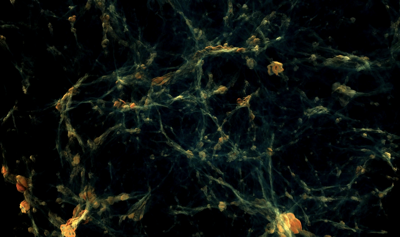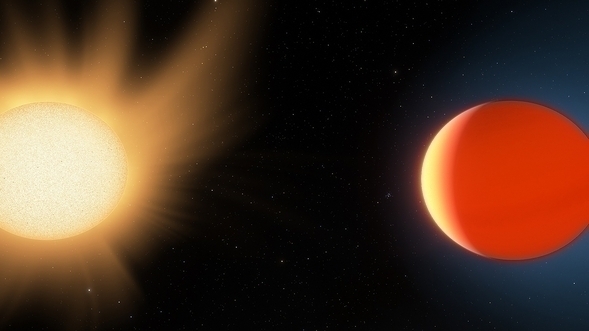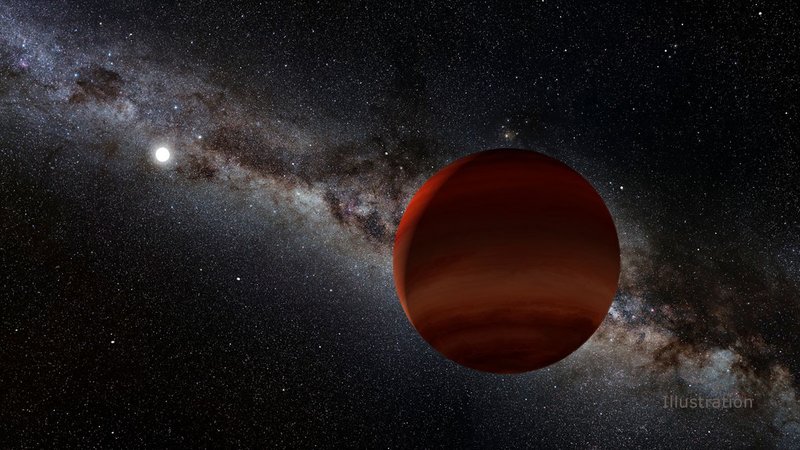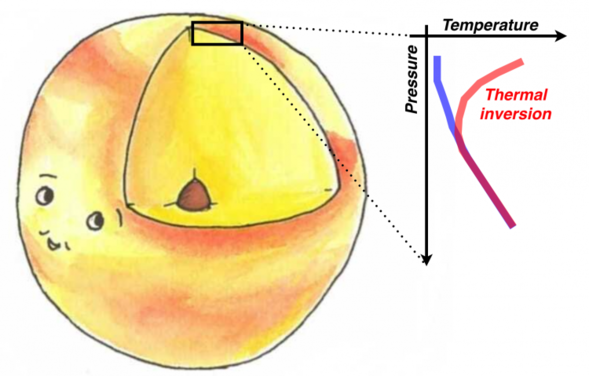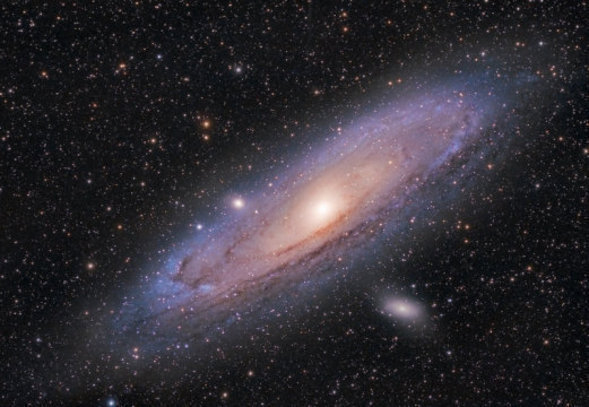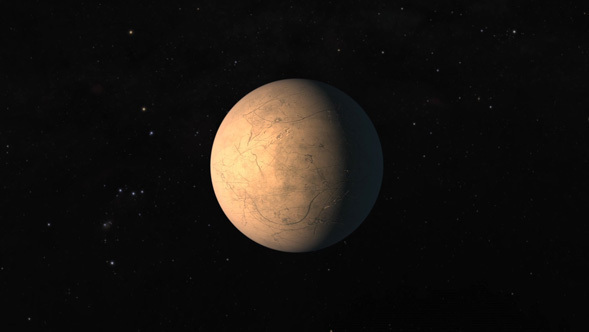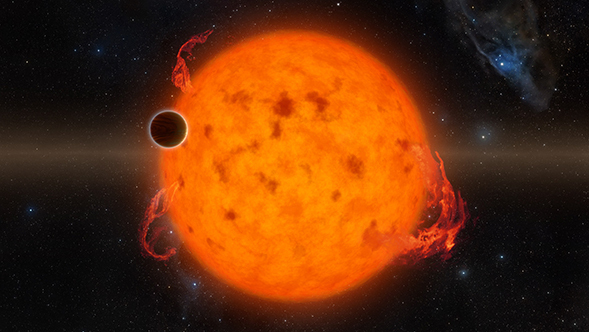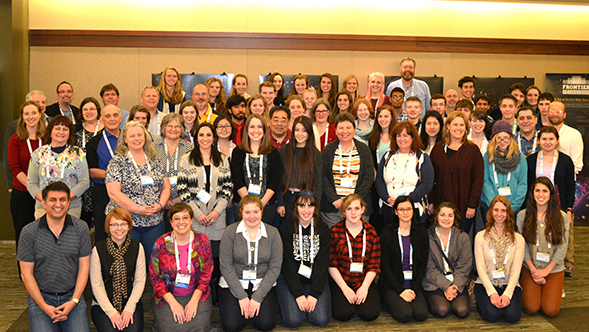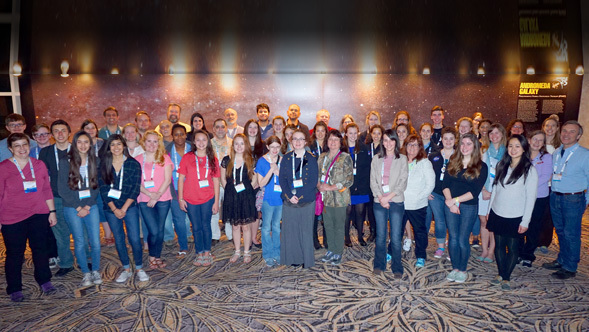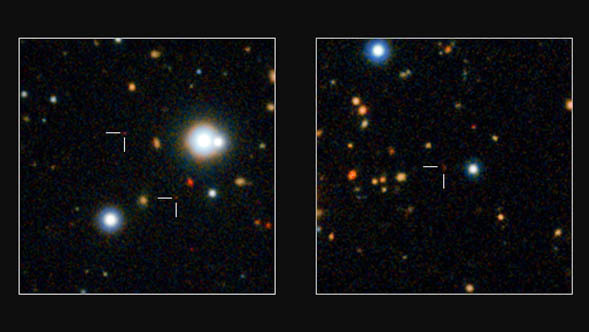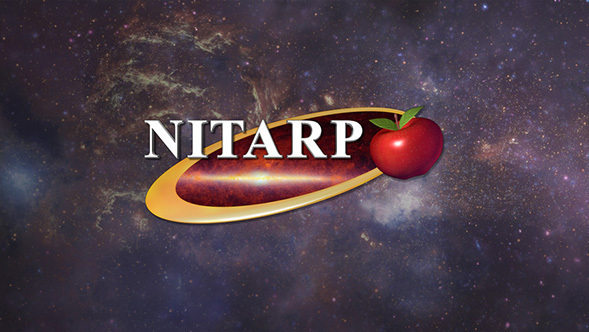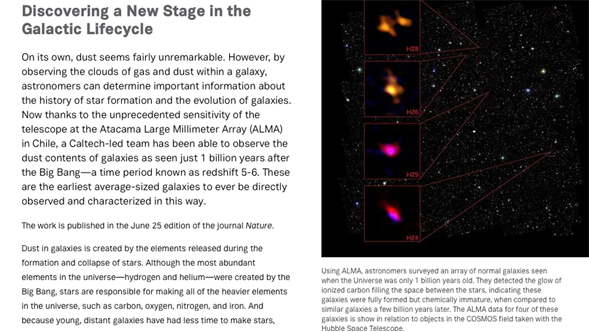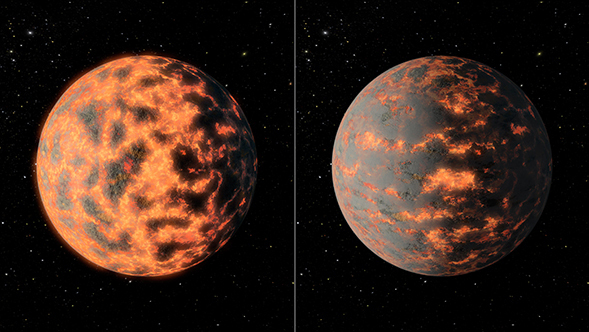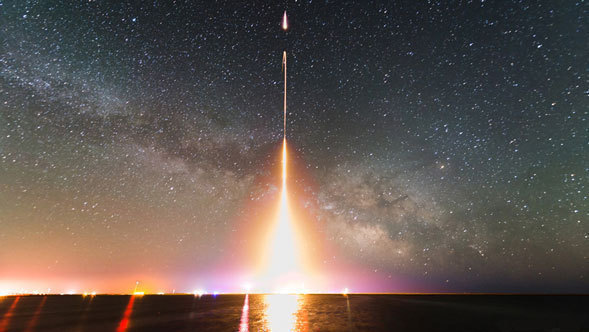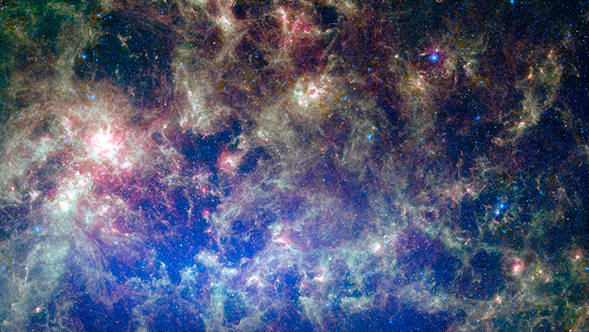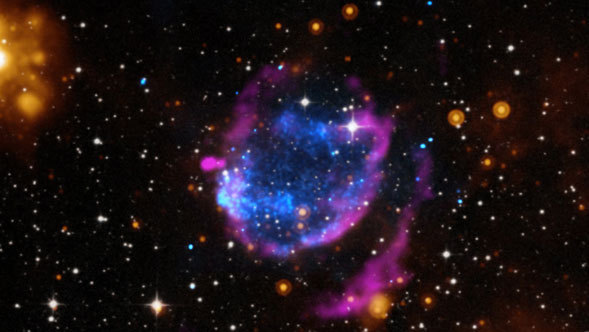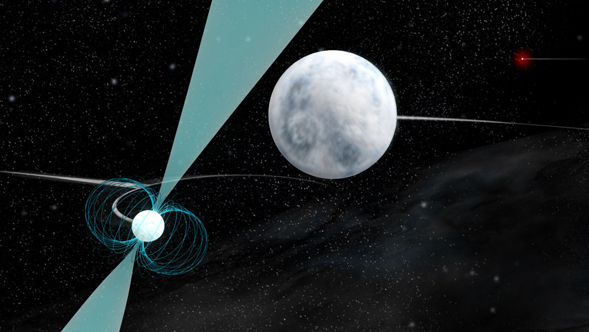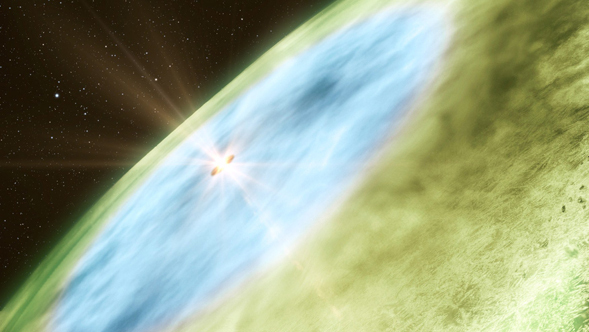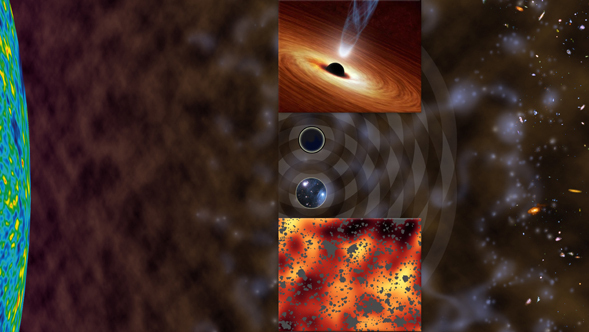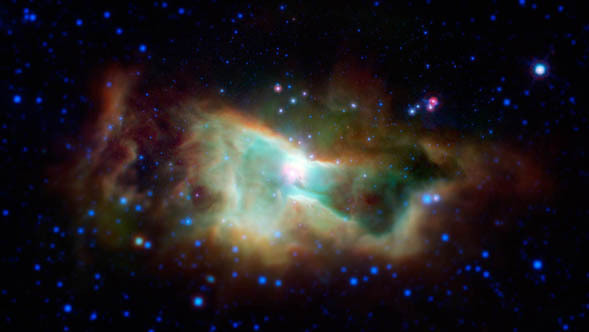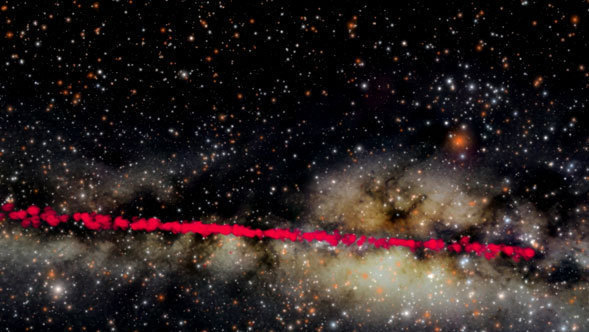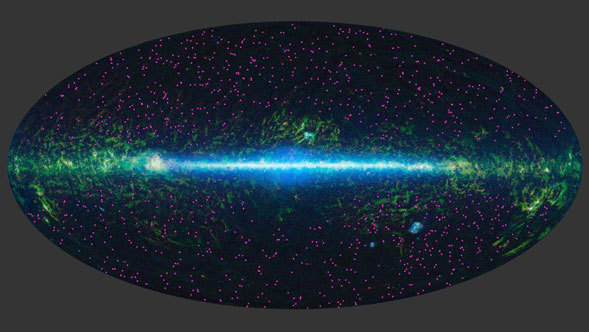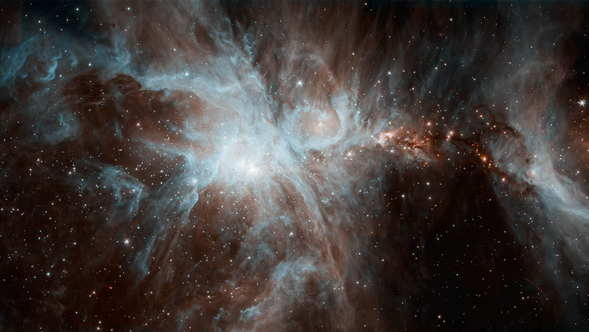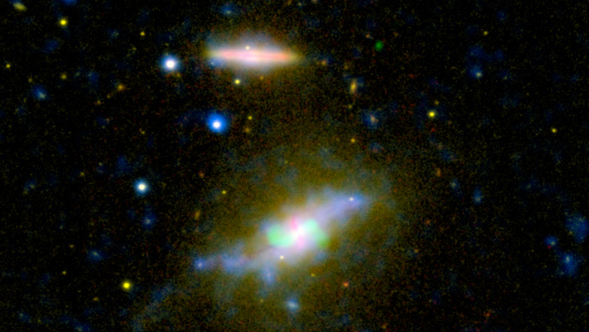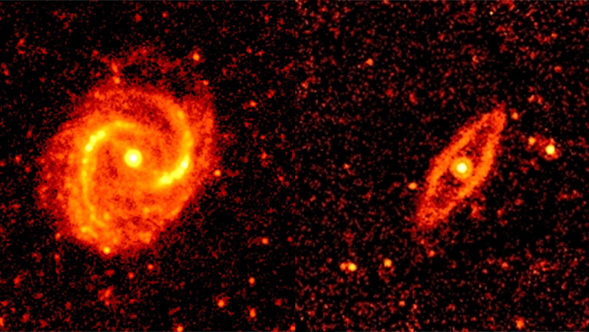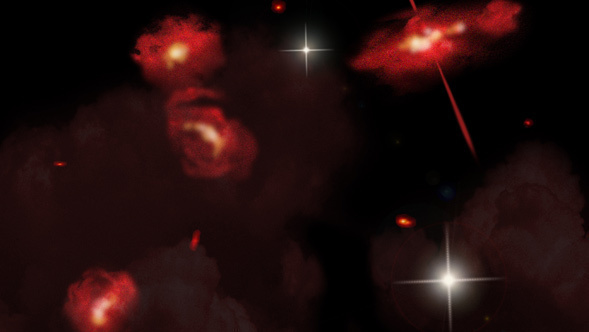Cosmic dawn, when stars formed for the first time, occurred 250 million to 350 million years after the beginning of the universe, according to a new study led by researchers at UC Santa Cruz, the University College London, and the University of Cambridge.
Using a NASA-designed software program, members of the public helped identify a cache of brown dwarfs - sometimes called failed stars - lurking in our cosmic neighborhood.
The thermal structure of hot gas giant exoplanet atmospheres is likely to be inverted for the hottest planets, a class of planets known as ultra-hot Jupiters.
Using known distances of 50 galaxies from Earth to refine calculations in Hubble's constant, astronomers estimates the age of the universe at 12.6 billion years.
Scientists using NASA's Kepler space telescope identified a regular pattern in the orbits of the planets in the TRAPPIST-1 system that confirmed suspected details about the orbit of its outermost and least understood planet, TRAPPIST-1h.
Astronomers have discovered the youngest fully formed exoplanet ever detected. The discovery was made using NASA's Kepler Space Telescope and its extended K2 mission, as well as the W. M. Keck Observatory on Mauna Kea, Hawaii. Exoplanets are planets that orbit stars beyond our sun.
Nine NITARP alumni educators, some of their current students, and a student alumna have all returned this year to AAS, paying their own way to attend the international conference.
More than 50 teachers, students and astronomy educators from the NASA/IPAC Teacher Archive Research Program (NITARP) will be attending the winter meeting of the American Astronomical Society (AAS).
The fantasy creations of the "Star Wars" universe are strikingly similar to real planets in our own Milky Way galaxy. A super Earth in deep freeze? Think ice-planet "Hoth." And that distant world with double sunsets can't help but summon thoughts of sandy "Tatooine."
ESO’s VISTA survey telescope has spied a horde of previously hidden massive galaxies that existed when the Universe was in its infancy. By discovering and studying more of these galaxies than ever before, astronomers have, for the first time, found out exactly when such monster galaxies first appeared.
A team of Caltech researchers that has spent years searching for the earliest objects in the universe now reports the detection of what may be the most distant galaxy ever found.
A decade after graduating its first class, the NASA/IPAC Teacher Archive Research Program (NITARP)—a project that brings an authentic astronomy research experience into middle, high school and community college classrooms—has had resounding success.
Thanks to the unprecedented sensitivity of the telescope at the Atacama Large Millimeter Array (ALMA) in Chile, a Caltech-led team has been able to observe the dust contents of galaxies as seen just 1 billion years after the Big Bang—a time period known as redshift 5-6. These are the earliest average-sized galaxies to ever be directly observed and characterized in this way, thanks in part to observations obtained by NASA's Spitzer Space Telescope.
Using NASA’s Spitzer Space Telescope, the researchers observed thermal emissions coming from the planet, called 55 Cancri e – orbiting a sun-like star located 40 light years away in the Cancer constellation – and for the first time found rapidly changing conditions, with temperatures on the hot ‘day’ side of the planet swinging between 1000 and 2700 degrees Celsius.
A NASA sounding rocket experiment has detected a surprising surplus of infrared light in the dark space between galaxies, a diffuse cosmic glow as bright as all known galaxies combined. The glow is thought to be from orphaned stars flung out of galaxies.
A group of organic chemicals that are considered carcinogens and pollutants today on Earth, but are also thought to be the building blocks for the origins of life, may hold clues to how carbon-rich chemicals created in stars are processed and recycled in space.
Supernovas are the spectacular ends to the lives of many massive stars. These explosions can produce enormous amounts of energy and be as bright as an entire galaxy.
Astronomers using a number of telescopes, including Spitzer, have discovered a unique stellar system of two white dwarf stars and a superdense neutron star, all packed within a space smaller than Earth's orbit around the Sun. The closeness of the stars, combined with their nature, has allowed the scientists to make the best measurements yet of the complex gravitational interactions in such a system.
University of Texas at Austin astronomer Steven Finkelstein has led a team that has discovered and measured the distance to the most distant galaxy ever found. The galaxy is seen as it was at a time just 700 million years after the Big Bang.
Although it might seem counterintuitive, if you get far enough away from a smoldering young star, you can actually find snow lines—frosty regions where gases are able to freeze and coat dust grains. Astronomers believe that these snow lines are critical to the process of planet formation. - See more at: http://www.caltech.edu/content/seeing-snow-space#sthash.at6m3v61.dpuf
By comparing infrared and X-ray background signals across the same stretch of sky, an international team of astronomers has discovered evidence of a significant number of black holes that accompanied the first stars in the universe.
Scientists at NASA's Ames Research Center, Moffett Field, Calif., now have the capability to systematically investigate the molecular evolution of cosmic carbon. For the first time, these scientists are able to automatically interpret previously unknown infrared emissions from space that come from surprisingly complex organic molecules, called polycyclic aromatic hydrocarbons (PAHs), which are abundant and important across the universe. This allows scientists at Ames were able to interpret the cosmic infrared maps made by NASA's Spitzer Space Telescope.
Astronomers have discovered hundreds of previously-unknown sites of massive star formation in the Milky Way by using infrared telescopes and two of the largest radio telescopes on Earth.
NASA's Wide-Field Infrared Survey Explorer (WISE) has found millions of dusty supermassive black hole candidates spread across the sky, along with thousands of exceptionally bright "Dust-Obscured Galaxies," or DOGs. The Spitzer Space Telescope has followed up on these extreme objects and found that, in addition to hosting actively feeding black holes, the DOGs are feverishly churning out new stars.
Harvard-Smithsonian Center for Astrophysics
Supernova explosions and the jets of a monstrous black hole are scattering a galaxy's star-making gas like a cosmic leaf blower, a new study finds. The findings, which relied on ultraviolet observations from NASA's Galaxy Evolution Explorer and a host of other instruments, fill an important gap in the current understanding of galactic evolution.
A newly processed collection of infrared observations of more that 200 galaxies, based on data available from NASA's Spitzer Space Telescope archive, are being released to the science community. Dr. George Bendo of the Jodrell Bank Centre for Astrophysics will highlight the new imagery at the National Astronomy Meeting in Manchester from 27-30 March.
In the distant reaches of the universe, almost 13 billion light-years from Earth, a strange species of galaxy lay hidden. Cloaked in dust and dimmed by the intervening distance, even the Hubble Space Telescope couldn't spy it. It took the revealing power of NASA's Spitzer Space Telescope to uncover not one, but four remarkably red galaxies.
Displaying news 1 - 30 of 71 in total
